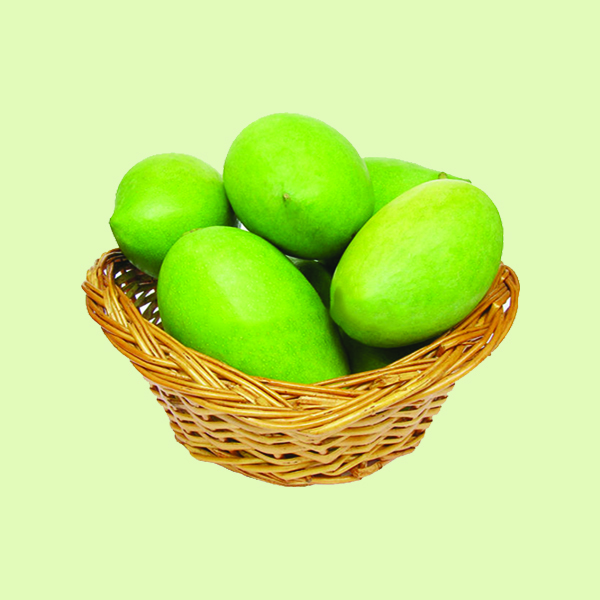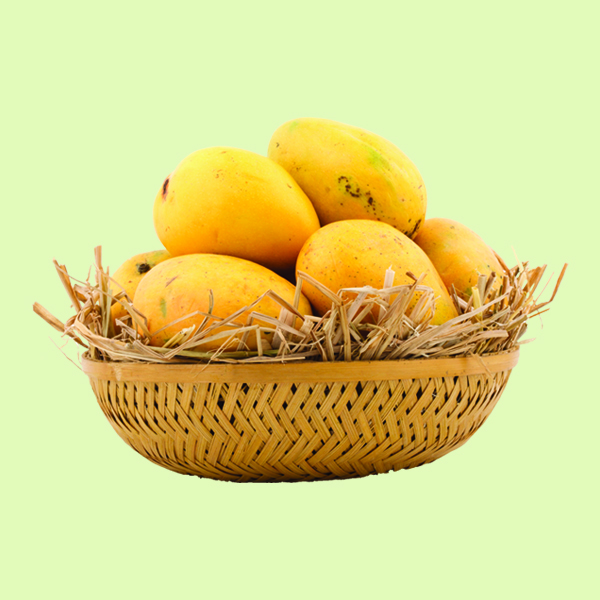Pickels
Cut Mango Pickle ( Avakaya Pachadi)
Price range: ₹35.00 through ₹850.00Ingredients and Preparation
The traditional preparation of Avakaya Pachadi involves a meticulous process, ensuring the right balance of flavors and long-term preservation. The key ingredients and steps are as follows:
- Mangoes: Unripe, firm green mangoes are chosen for their tartness and firm texture, essential for the pickle.
- Spices: Mustard seeds (ground into powder), red chili powder, fenugreek seeds, turmeric, and salt form the spice mix.
- Oil: Sesame oil (gingelly oil) is used, known for its preservative properties and distinctive flavor.
- Preparation:
- Cleaning and Cutting: Mangoes are thoroughly washed, dried, and cut into uniform pieces.
- Mixing: The mango pieces are mixed with the spice powders and salt, ensuring even coating.
- Oil Addition: The seasoned mango pieces are then combined with sesame oil.
- Storage: The mixture is stored in airtight ceramic or glass jars, allowing the pickle to mature over a few weeks. The maturation process enhances the flavors as the mango absorbs the spices and oil.
Gongura Pickle
Price range: ₹35.00 through ₹850.00Ingredients and Preparation
The traditional preparation of Avakaya Pachadi involves a meticulous process, ensuring the right balance of flavors and long-term preservation. The key ingredients and steps are as follows:
- Mangoes: Unripe, firm green mangoes are chosen for their tartness and firm texture, essential for the pickle.
- Spices: Mustard seeds (ground into powder), red chili powder, fenugreek seeds, turmeric, and salt form the spice mix.
- Oil: Sesame oil (gingelly oil) is used, known for its preservative properties and distinctive flavor.
- Preparation:
- Cleaning and Cutting: Mangoes are thoroughly washed, dried, and cut into uniform pieces.
- Mixing: The mango pieces are mixed with the spice powders and salt, ensuring even coating.
- Oil Addition: The seasoned mango pieces are then combined with sesame oil.
- Storage: The mixture is stored in airtight ceramic or glass jars, allowing the pickle to mature over a few weeks. The maturation process enhances the flavors as the mango absorbs the spices and oil.
Red Chilli Pickle
Price range: ₹35.00 through ₹850.00Ingredients and Preparation
The traditional preparation of Avakaya Pachadi involves a meticulous process, ensuring the right balance of flavors and long-term preservation. The key ingredients and steps are as follows:
- Mangoes: Unripe, firm green mangoes are chosen for their tartness and firm texture, essential for the pickle.
- Spices: Mustard seeds (ground into powder), red chili powder, fenugreek seeds, turmeric, and salt form the spice mix.
- Oil: Sesame oil (gingelly oil) is used, known for its preservative properties and distinctive flavor.
- Preparation:
- Cleaning and Cutting: Mangoes are thoroughly washed, dried, and cut into uniform pieces.
- Mixing: The mango pieces are mixed with the spice powders and salt, ensuring even coating.
- Oil Addition: The seasoned mango pieces are then combined with sesame oil.
- Storage: The mixture is stored in airtight ceramic or glass jars, allowing the pickle to mature over a few weeks. The maturation process enhances the flavors as the mango absorbs the spices and oil.
Tomato Pickle
Price range: ₹35.00 through ₹850.00Ingredients and Preparation
The traditional preparation of Avakaya Pachadi involves a meticulous process, ensuring the right balance of flavors and long-term preservation. The key ingredients and steps are as follows:
- Mangoes: Unripe, firm green mangoes are chosen for their tartness and firm texture, essential for the pickle.
- Spices: Mustard seeds (ground into powder), red chili powder, fenugreek seeds, turmeric, and salt form the spice mix.
- Oil: Sesame oil (gingelly oil) is used, known for its preservative properties and distinctive flavor.
- Preparation:
- Cleaning and Cutting: Mangoes are thoroughly washed, dried, and cut into uniform pieces.
- Mixing: The mango pieces are mixed with the spice powders and salt, ensuring even coating.
- Oil Addition: The seasoned mango pieces are then combined with sesame oil.
- Storage: The mixture is stored in airtight ceramic or glass jars, allowing the pickle to mature over a few weeks. The maturation process enhances the flavors as the mango absorbs the spices and oil.
Online Sports Nutrition and Natural Dietetics.
Chances are there wasn't collaboration, communication, and checkpoints, there wasn't a process agreed upon or specified with the granularity required. It's content strategy gone awry right from the start. Forswearing the use of Lorem Ipsum wouldn't have helped, won't help now. It's like saying you're a bad designer, use less bold text, don't use italics in every other paragraph. True enough, but that's not all that it takes to get things back on track.
The villagers are out there with a vengeance to get that Frankenstein
You made all the required mock ups for commissioned layout, got all the approvals, built a tested code base or had them built, you decided on a content management system, got a license for it or adapted:
- The toppings you may chose for that TV dinner pizza slice when you forgot to shop for foods, the paint you may slap on your face to impress the new boss is your business.
- But what about your daily bread? Design comps, layouts, wireframes—will your clients accept that you go about things the facile way?
- Authorities in our business will tell in no uncertain terms that Lorem Ipsum is that huge, huge no no to forswear forever.
- Not so fast, I'd say, there are some redeeming factors in favor of greeking text, as its use is merely the symptom of a worse problem to take into consideration.
- Websites in professional use templating systems.
- Commercial publishing platforms and content management systems ensure that you can show different text, different data using the same template.
- When it's about controlling hundreds of articles, product pages for web shops, or user profiles in social networks, all of them potentially with different sizes, formats, rules for differing elements things can break, designs agreed upon can have unintended consequences and look much different than expected.
This is quite a problem to solve, but just doing without greeking text won't fix it. Using test items of real content and data in designs will help, but there's no guarantee that every oddity will be found and corrected. Do you want to be sure? Then a prototype or beta site with real content published from the real CMS is needed—but you’re not going that far until you go through an initial design cycle.































